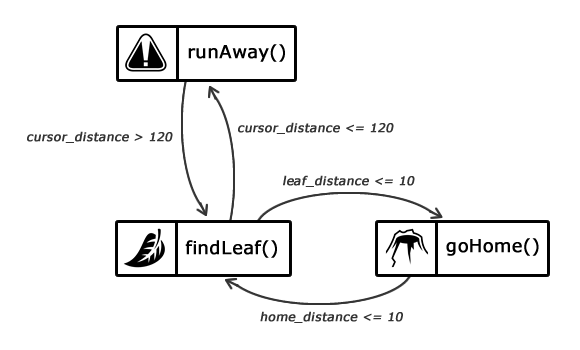So I am working on a 2D game in Unity that would probably be best described as a top down game similar to Starbound / Terraria with a much heavier focus on combat and character progress and less on the exploration / building.
Up until now my enemy controller has been very basic with just inline code that does basic checking around itself for the player, chasing the player if in a certain range, attacking the player in a certain range, and so on. I am now trying to have more behaviors that the enemy can have and having all this inline in the enemy controller is getting a bit hard to manage and make more modular to make enemies with different behavior easily. For example I would want to have a number of different actions an enemy can do:
- Roam when a target is not in range (whether the be the player or another NPC)
- Roam when a target is not in line of sight
- Chase target when it enters within the enemies range
- Chase target when it enters the line of sight on the enemy
- Range attack target when it is in certain range of the enemy
- Melee attack target when it is in certain range of the enemy
- Teleport to a random location within a certain range when the target gets close enough to the enemy
- Perform seal heal when enemy's health gets too low
- Run away when the enemy's health gets too low
Not all enemies will have all these possible actions so I want to be able to as easily as possible add and remove these action for enemies and just as easily add new actions to the pool of available actions.
I am trying to figure out the best way to handle this kinda of behavior. Finite State Machines seem to be the most common thing I see suggested but was wondering if there might be something else I should be looking into.
Also looking for learning resource for whatever solution I end up going with (ideally something in video form and even better if it is focused on a C# implementation).
Any help with this would be awesome, Thanks.






